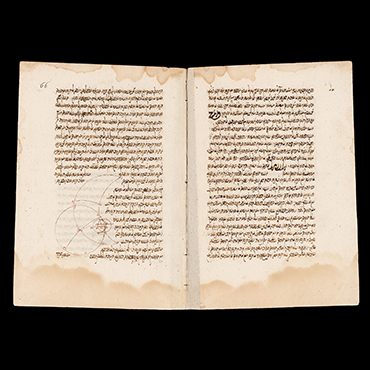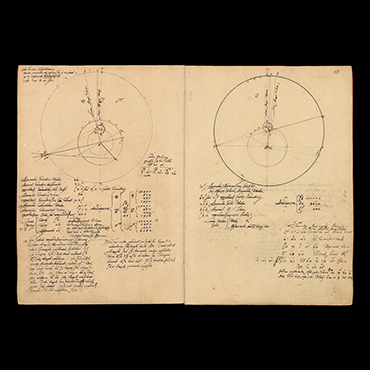Founded in AH 851/1447 CE, the Vatican Apostolic Library’s history lies in the collections amassed by the popes for their private use. An inventory from AH 694/1295 CE details 443 codices. The return in AH 777/1376 CE of the pope and the curia to Rome marked the beginning of a new collection of books, recorded by an inventory in AH 847/1443 CE. Pope Nicholas V (r. AH 850–59/1447–55 CE) established a new papal library intended to benefit scientists and scholars, gathering around 1,300 manuscripts, more than 400 of them in Greek. This would become the Vatican Library.
The Franciscan Pope Sixtus V (r. AH 993–98/1585–90 CE) provided the library with new and larger premises, which eventually became its current home. Today, the Vatican Apostolic Library holds one of the largest collections of manuscripts in the world, comprising some 90,000 items, excluding archival holdings. The Islamic manuscript collections comprise approximately 3,500 Arabic manuscripts, 600 Turkish manuscripts, and just under 200 Persian manuscripts. Notably, the collection includes hundreds of Qur’an manuscripts, with around 100 Kufic fragments dating from 1st to 3rd centuries AH/7th to 9th centuries CE.

The Vatican Apostolic Library explores the theme of numbers through its manuscript collections from different perspectives. The first highlights the transmission of Indian numerals and mathematics to the Arab world and eventually to the West by Leonardo Fibonacci (AH 565–647/1170–1250 CE). The second showcases the recalculation of the Ptolemaic geocentric model of the universe in the Islamic scientific tradition and the emergence of the Copernican heliocentric system. The third presentation highlights rare, early translations of the Qur’an, and the fourth emphasizes cartography as a reflection of curiosity and a desire for exploration of the world.
Nur al-‘Alam (Light of the World) of Joseph ibn Nahmias
This a unique work of theoretical astronomy, written in Judeo-Arabic, is by the Spanish rabbi, Ibn Nahmias, about whom little is known. Composed in the 8th century AH/14th century CE,
Nur al-‘Alam engages with a group of Andalusi astronomers from 200 years earlier, including Ibn Tuhfail, Ibn Bitruji, and Maimonides, who critiqued Ptolemy’s explanations of celestial motion as inconsistent with Aristotelian cosmology’s nested orbs. Nur al-‘Alam builds on Ibn Bitruji’s Kitab fi al-Hai’a (On the Principles of Astronomy), rejecting Ptolemaic eccentric orbs and epicycles.
It represents the final attempt in Arabic astronomy to blend Ptolemy’s mathematical predictions with uniform, revolving spheres. The model’s challenges, combined with its Jewish context, may have contributed to its obscurity. However, Ibn Nahmias’ ideas seem to have influenced Renaissance Italy, with Copernicus citing Ibn Bitruji in both Commentariolus (AH 921/1516 CE) and De revolutionibus (AH 949/1543 CE). The diagram shown illustrates a theoretical proposal of solar motion.
Probably Toledo, Spain, c. AH 802/1400 CE
Ink on paper with leather binding, h. 21.1 × w. 14.7 × d. 3.3 cm; each folio h. 20 × w. 14 cm
Vatican City, Vatican Apostolic Library, Vat. Ebr. 392

